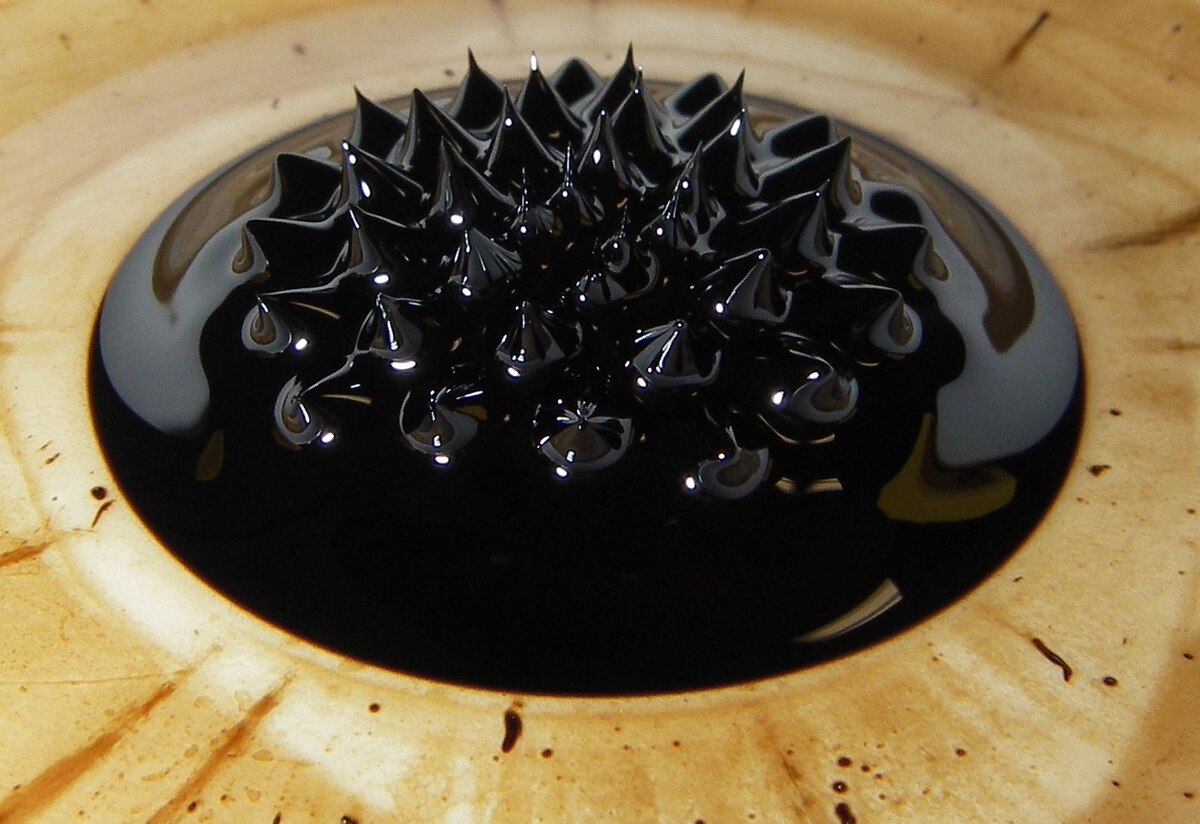The precise mechanism of what's going on inside magnets is impossible to describe without detailed knowledge of their structure, so I will have to talk in general terms. However, we will see that in general, there is nothing mysterious going on in magnets.
What we know about metals is that they are not random collections of atoms. They are mega-structures. Treated the right way, they have orientation, like crystals.
A random low energy photon finding its way into a magnet will find atoms structured in such a way that there are quick ways to get out of it, and lengthy ways to get out of it.
Bouncing about inside a magnet, many low energy photon will find the quick exits. These are tunnels in the lattice going in the north-south direction.
This is not unique to magnets, but quite common. All crystals have this feature, yet very few crystals, if any, are magnets. So the presence of quick exit points do not in themselves explain magnets.
What makes magnets special is that the walls of their tunnels are lined with electrons that give the photons the required spin and direction to form sustainable polarization. The more coordinated and vigorously the electrons spin, the more magnetic is the magnet.
This means that magnetism is transmitted by low energy photons that have found their way into magnets. The photons do not bounce at the poles, as suggested in an earlier post. They find their way into the magnet where they receive spin and direction from electrons.
Low energy photons are extremely small, even by photon standards. They enter all substances with ease. They do not generally reflect from surfaces.
Another thing I suggested was that magnetism does not result in any coordination of flow. This too is incorrect. In addition to speed and direction of spin, magnets coordinate flow along their north-south axis. However, there is no net flow. There is equal flow out of both ends of the magnet, so there is still no free energy to be had.
Interestingly enough, it is in fact possible to observe the coordination of flow.
The curious pattern that ferrofluids produce in the presence of magnetic fields can be explained by the coordinated flow of low energy photons.
In the post on magnetic fields, the fanning out of the field at the poles was explained by the fact that outgoing photons interact with incoming photons in such a way that the out going photons fan out.
The outgoing photons polarize neighboring photons by bumping into them. Photons that come in from the side get caught up in the flow and direction, but with less intensity than the ones coming out of the magnet.
Around every photon coming out of a magnet, a bunch of less magnetic photons collect and move in the same direction.
It is only beyond this bundle of coordinated outgoing photons that incoming photons find their place. They are less coordinated still. They are relatively random in their spin and orientation.
What we get is a fanning out of highly polarized outgoing photons surrounded by less coordinated photons, also going out, separated again by relatively uncoordinated incoming photons.
This is exactly the pattern that ferrofluids display. There are sharp peeks, separated by relatively flat troughs. Specs of iron inside the ferrofluid get pulled up and away from the magnet by the highly magnetized photons. This produces pressure points in the liquid, visible as spikes.
Note that there is no flow in the ferrofluid. There is only pressure. We have not discovered any free energy here either. However, we have found an explanation for what we observe.
 |
| Ferrofluid in magnetic field |
By Steve Jurvetson - https://www.flickr.com/photos/jurvetson/136481113/, CC BY 2.0, Link
No comments:
Post a Comment